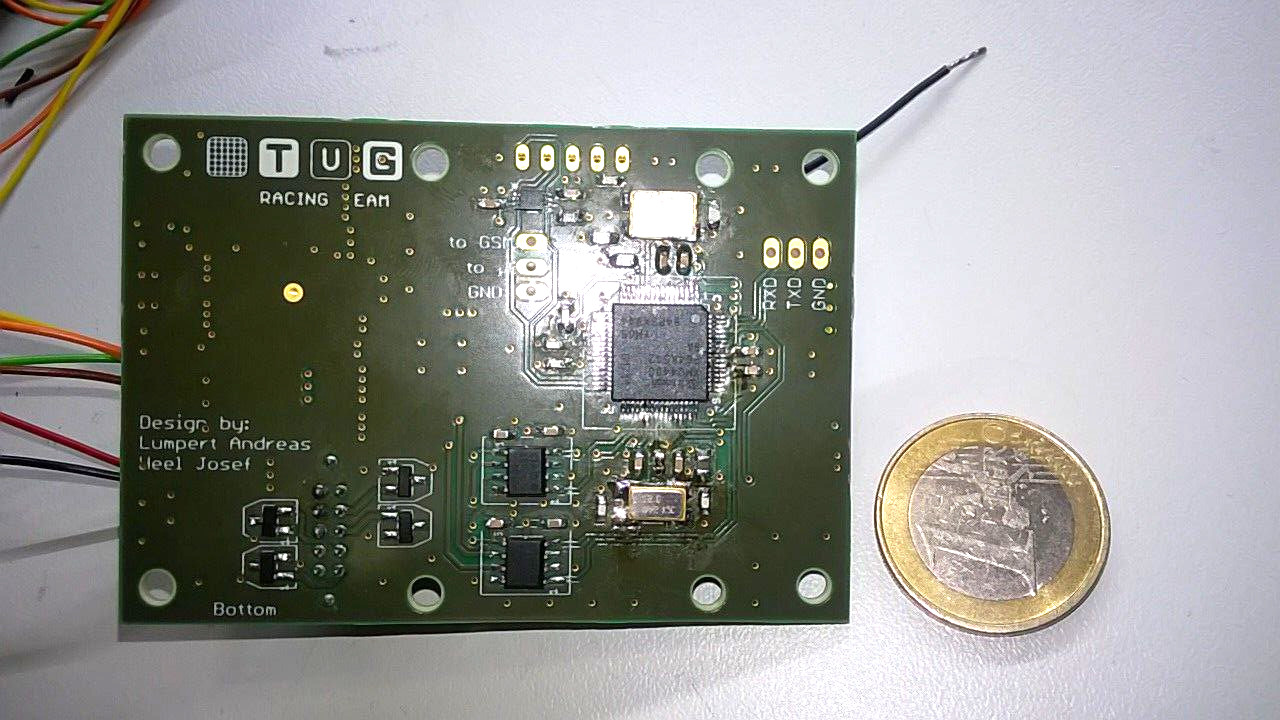Live telemetry for Racing TUGRAZ
Electronics, Projects ·Introduction
When I came to Graz for studying electrical engineering, many student groups had set up stands to inform the newbies on what they were doing and invite them for joining. One of those caught my attention, the TUGRAZ racing team. A group of motivated students builds a highly sophisticated and pretty cool racing car (see in the banner or at the webpage) each year to compete against other universities at the Formula Student events all over the world. I was part of the electronics team in the 2017/2018 season and responsible for a live telemetry module.
The need for such module is briefly explained first. On the car, there are many electronic devices, sensors etc. communicating over three CAN-busses. All the CAN-data is logged onboard for analysis after a race, but obviously it would be helpful if important information could be accessed “live” by the ground crew to give advice to the driver immediately via radio if trouble occurs, for example if the oil or water temperature rises too much. Previously, some attempts were made using XBee modules, but they only worked if the car was in close proximity to the receiver.
The basic idea is now to build a small box which listens on two of the three CAN-busses, catches certain messages, dumps them into a buffer and drains the buffer over a mobile internet connection as fast as possible. Because of sponsoring reasons, the design was based around the XMC4400 automotive MCUs from Infineon.
My part in this project was the software on the MCU and the layout and manufacturing of the PCB, the last two ones partly with a friend. The server which receives and visualizes the data was done by another colleague.
The GSM module
Because good coverage and a stable connection was the top priority in the design, the decision was made to use the GSM standard. Coverage is best in this band, although the data rate is fairly low, around 100kBit/s at best. The SIM900 module on a little breakout board was chosen because it is easily available, cheap and widely used in hobby projects, so a lot of information is available online.
This module itself has a 3.3V UART interface, but the levels are converted to RS232 levels with an onboard level shifter. Unfortunately, on these breakoutboards commonly available on ebay, this circuitry is done so poorly that the occasional byte would be received incorrectly. In the end, the level shifter was stripped and direct connections were made from the MCU to the SIM900 to avoid this completely unnecessary issue.

Live telemetry PCB
The main MCU, CAN interface, GSM-module and power supply were put on a small PCB. Care had to be taken that all components were attached firmly and everything was glued down because the massive two-stroke engine causes the whole chassis to vibrate violently.


Results
I was never attending the races myself, but I’ve been told that the system worked during most races and once even prevented the engine from overheating because the driver was told to go more gentle for a while. Occasionally, however, it would just not connect to the mobile network, and there is unfortunately not so much one can do in such situation other than sending retry commands to the GSM module. Additionally, the low data rate does not allow other interesting uses such as transmitting acceleration sensor data, which could be used to dynamically adapt various parameters and timings during a race.
For this reason, a second version of this module was created in the season 2018/2019 with a more modern 3G-module allowing up to 50MBit/s or so. Because of time limitations, however, I was not an official team member anymore. I only did the PCB layout for this project and assisted with a couple of questions due to my experiences from the last year.